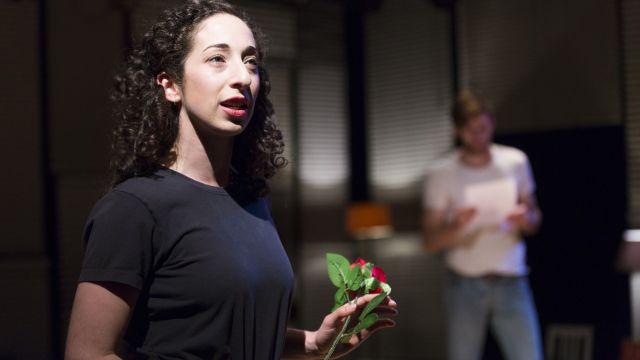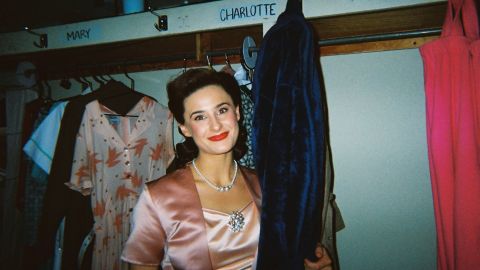Lighting An Audience

NIDA’s 2017 October season of student productions offered an interesting challenge for student Veronique Benett. She worked as the Lighting Designer on Fraternal – an original play from NIDA graduate Jake Stewart - which lit the audience.
“We were in one of NIDA’s smaller performance spaces, the Reg Grundy Studio, and the play was staged on a revolving stage in the round,” she said.
“One of the challenges was, because we were lighting the audience area, that we had to create a dynamic lighting rig that worked for all the scenes but also didn’t shine in the audience’s eyes.”
The movement of the stage and how that affected the way actors were seen by the audience was another factor.
“Normally you know where the actor is going to be on stage and how they’re going to move. However, we didn’t have a revolve in the rehearsal room. On a revolve, the lights are coming from all sides as the actors rotate and are dipping in and out of the light, with the shadow on their faces changing the way they look. It’s much more dynamic. Depending on where a person is sitting, the performance looks different,” said Veronique.
“The director wanted the audience to feel part of the production and achieved this by lighting the audience as well as the set. This would then bring them into the same room as the actors. There were also venetian blinds all the way around the set, so the audience could be brought into the room.”

“The lighting set the tone for the mood and what was happening. It was also used to help to shift the story along.
“I used a lot of colour, but in really soft tints for the set – like lavenders and chocolate shades. We lit the audience mainly using parcans, around 70 in total for the whole setup, with predominantly a warm wash.
“We had to shape the space. Sometimes the lighting was on the audience and we would adjust the brightness and intensity according to the scene and how we wanted to audience to feel. Other times it was completely off them because we didn’t want them to be seen and we didn’t want them to feel as though everyone else could see each other in the room.
“Once you’re in the venue, a lot of it is done as you go along because things look better once you try them out in different places. You have to account for what you see in the venue. It was a great lesson as a new designer to build flexibility into the lighting rig.”
Another challenge arrived in that the Reg Grundy Studio is a film studio and isn’t equipped with a standard rig like other theatres.

“I found a love of the really low-tech parcans and I also used an older light called a Pattern 23, which had really beautiful light because they’d been maintained by the team at NIDA. I was able to hire a couple of movers - I had four of those in the corners. Other than that it was conventional lights, based on what we had here. I didn’t use any of the film stock.”
Why is important to be part of the process early?
“If you’re part of the design team early you can be part of the decision making and design process, rather than facilitate someone else’s vision. You can incorporate the lighting as part of the whole picture on stage”.
Veronique Benett, who was a Bachelor of Fine Arts (Technical Theatre and Stage Management) student at the time of the production, is now studying for a Master of Fine Arts (Design for Performance) at NIDA and training to be a multi-disciplinary designer (lighting, set and costume).
The creative team included Ben Sheen, the Director, and Masters of Fine Arts (Design for Performance) student Genevieve Graham, who was Set and Costume Designer.







